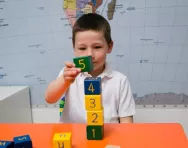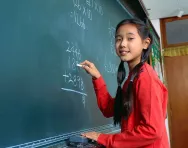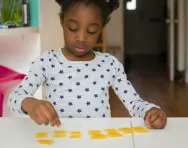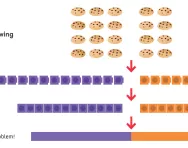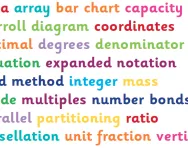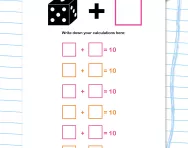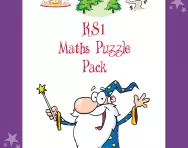Important update from TheSchoolRun
For the past 13 years, TheSchoolRun has been run by a small team of mums working from home, dedicated to providing quality educational resources to primary school parents. Unfortunately, rising supplier costs and falling revenue have made it impossible for us to continue operating, and we’ve had to make the difficult decision to close. The good news: We’ve arranged for another educational provider to take over many of our resources. These will be hosted on a new portal, where the content will be updated and expanded to support your child’s learning.
What this means for subscribers:
- Your subscription is still active, and for now, you can keep using the website as normal — just log in with your usual details to access all our articles and resources*.
- In a few months, all resources will move to the new portal. You’ll continue to have access there until your subscription ends. We’ll send you full details nearer the time.
- As a thank you for your support, we’ll also be sending you 16 primary school eBooks (worth £108.84) to download and keep.
A few changes to be aware of:
- The Learning Journey weekly email has ended, but your child’s plan will still be updated on your dashboard each Monday. Just log in to see the recommended worksheets.
- The 11+ weekly emails have now ended. We sent you all the remaining emails in the series at the end of March — please check your inbox (and spam folder) if you haven’t seen them. You can also follow the full programme here: 11+ Learning Journey.
If you have any questions, please contact us at [email protected]. Thank you for being part of our journey it’s been a privilege to support your family’s learning.
*If you need to reset your password, it will still work as usual. Please check your spam folder if the reset email doesn’t appear in your inbox.
What is the concrete pictorial abstract approach in maths?
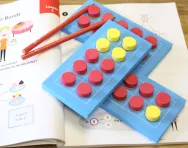
What is concrete > pictorial > abstract (CPA) in maths?
The CPA method involves using actual objects for children to add, subtract, multiply or divide. They then progress to using pictorial representations of the object, and ultimately, abstract symbols.
Children often find maths difficult because it is abstract. The CPA approach helps children learn new ideas and build on their existing knowledge by introducing abstract concepts in a more familiar and tangible way.
CPA maths approach: concrete
Concrete is the ‘doing’ stage, using concrete objects to solve problems. It brings concepts to life by allowing children to handle physical objects themselves. Every new abstract concept is learned first with a ‘concrete’ or physical experience. For example:
There are 8 flowers in the vase. Hannah has 2 flowers in her hand. How many flowers are there altogether?
In this problem, the children might first handle actual flowers – the concrete stage – before progressing to handling counters or cubes (like Numicon) which are used to represent the flowers.

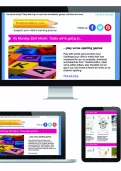
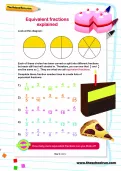
Boost Your Child's Learning Today!
- Start your child on a tailored learning programme
- Get weekly English & maths resources sent direct to your inbox
- Keep your child's learning on track
CPA maths approach: pictorial
Pictorial is the ‘seeing’ stage, using representations of the objects involved in maths problems. This stage encourages children to make a mental connection between the physical object and abstract levels of understanding, by drawing or looking at pictures, circles, diagrams or models which represent the objects in the problem.
Building or drawing a model makes it easier for children to grasp concepts they traditionally find more difficult, such as fractions, as it helps them visualise the problem and make it more accessible.
For example, for the above problem, the pictorial stage would involve using drawings of flowers, or pictures of objects such as multi-link blocks or counters, to represent the actual object.

CPA maths approach: abstract
Abstract is the ‘symbolic’ stage, where children are able to use abstract symbols to model and solve maths problems.
Once a child has demonstrated that they have a solid understanding of the ‘concrete’ and ‘pictorial’ representations of the problem, the teacher can introduce the more ‘abstract’ concept, such as mathematical symbols.
Children are introduced to the concept at a symbolic level, using only numbers, notation, and mathematical symbols, for example +, –, x, / to indicate addition, multiplication, or division.
So, for the following problem:
Jim has 12 cookies. Julie has 8 cookies. How many do they have altogether?
Children at the abstract stage would be able to solve the problem by writing it out as 12 + 8 = 20.
Moving through the CPA stages
Although CPA has three distinct stages, a skilled teacher will go back and forth between them to reinforce concepts. They should also vary the apparatus the children use in class. For example, one day they might use counters; another day they might use a ten frame.
Similarly, children are encouraged to represent maths problems in a variety of ways, for example, drawing an array, a number bond diagram or a bar model. Varying the apparatus and methods they use to solve a problem helps children to make quicker mental connections between the concrete, pictorial and abstract phases.
When is the CPA method introduced in the primary classroom?
There’s no minimum age for introducing the CPA method to children. When teaching young children maths, counters and multi-link cubes are commonly used.
By the end of KS1, children shouldn’t be reliant on concrete equipment, and should be able to use either pictorial representations or abstract understanding.
Children are often weaned off using concrete methods in KS2, as they’re not allowed in SATs. However, the CPA method is still a great aid, even if children can just visualise the concrete objects, or represent them pictorially.
Maths – No Problem! are the first experts to introduce Singapore maths mastery to the UK and provide textbooks, teaching resources and professional development for primary and secondary schools.
